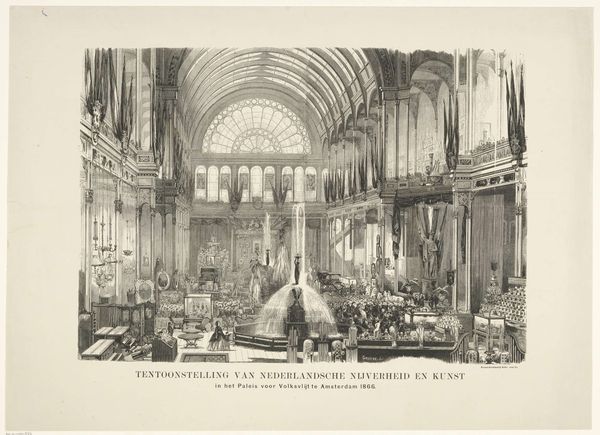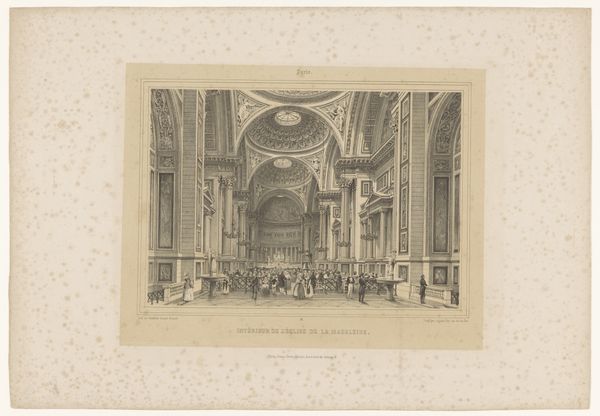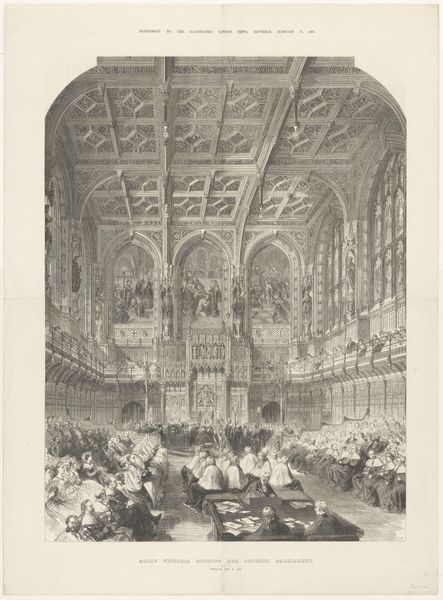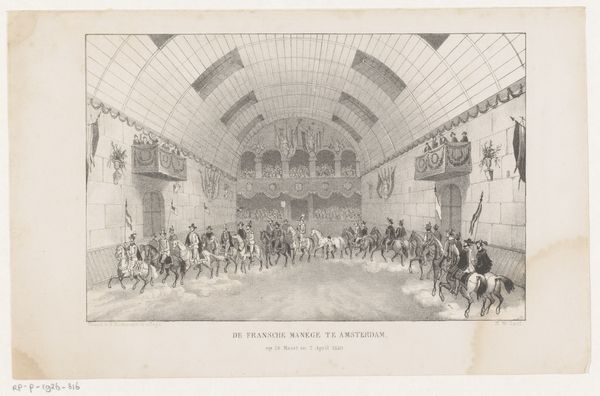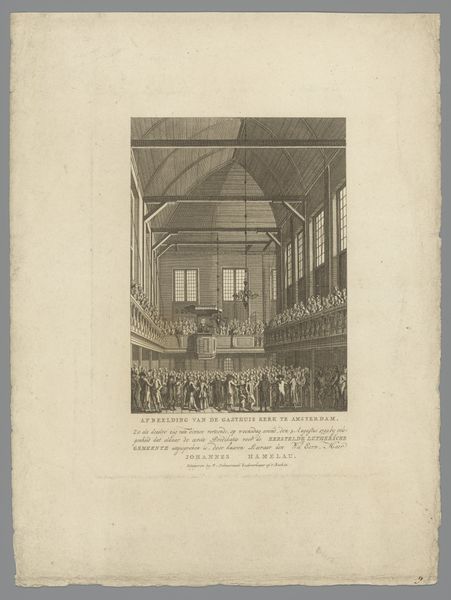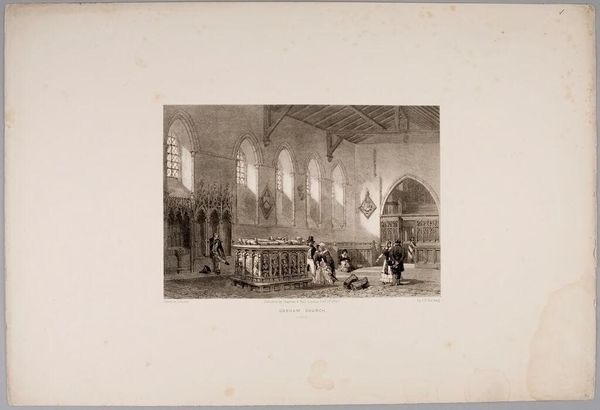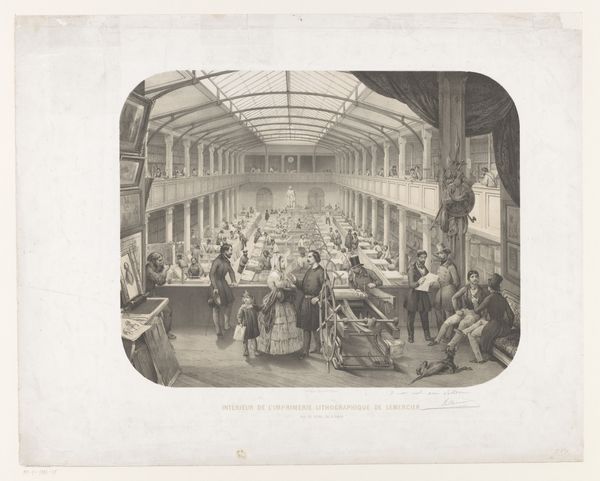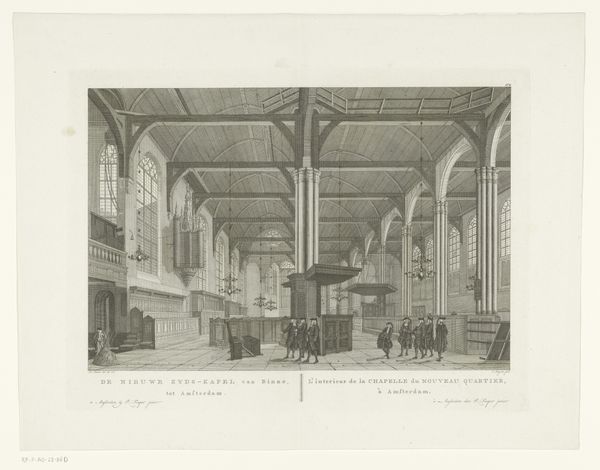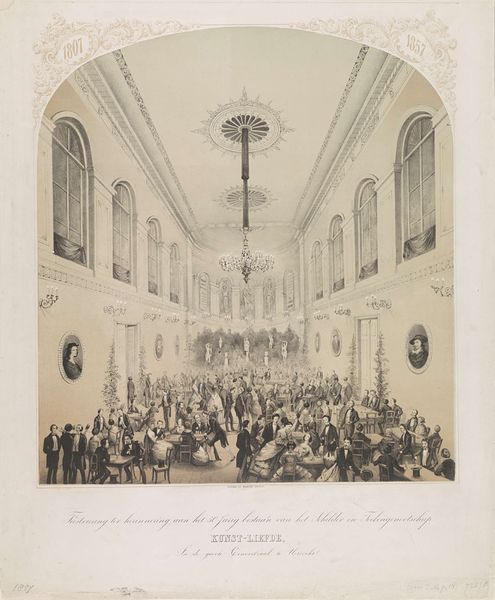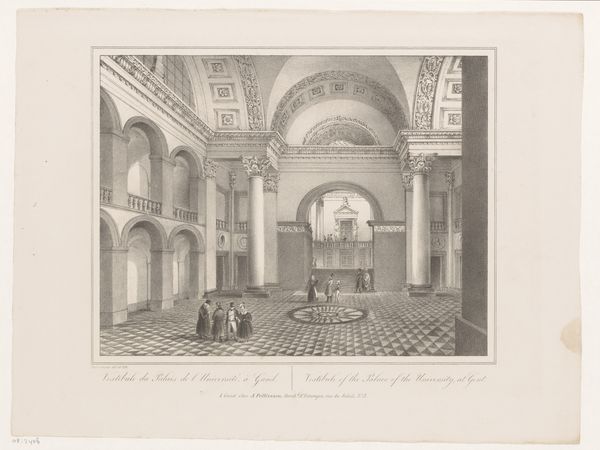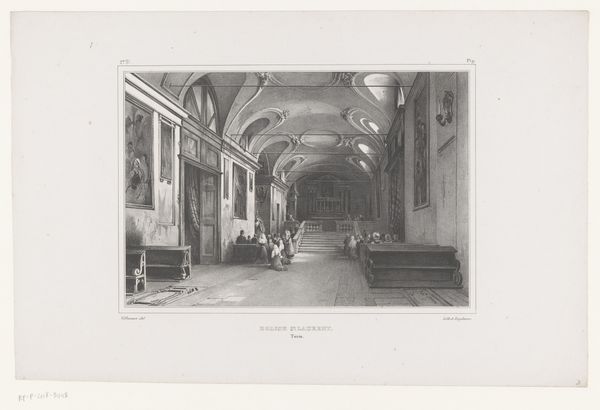
drawing, print, engraving
#
drawing
# print
#
cityscape
#
genre-painting
#
engraving
#
realism
Dimensions: height 295 mm, width 408 mm
Copyright: Rijks Museum: Open Domain
Editor: This is Alfred Harral's "Leeszaal van het British Museum," an engraving that probably dates from 1875-76. What strikes me most is the building's geometry, the light filtering in, and how it contrasts with all those diligently working readers. How do you interpret this work? Curator: It's fascinating to consider how a space dedicated to learning, like the British Museum Reading Room, becomes itself a symbolic vessel. The dome, that architectural feature reaching back to antiquity, evokes a sense of encompassing the known world. Observe how the windows mimic illuminated manuscripts. What feeling do you think the artist wants to give? Editor: Awe, maybe? But there’s also a sense of contained energy, everyone focused yet part of a collective purpose. Do you see any specific symbolism within the figures themselves? Curator: Precisely. Consider the lone figures on the upper balconies amidst those bound books. Are they guardians of knowledge or scholars seeking seclusion? Each character seems to carry a distinct narrative. Notice too how individuals engage – or don’t – with one another. What do their postures communicate to you? The composition suggests knowledge both unites and isolates. Editor: That makes me think of the library today—both a shared space and a private one. It's intriguing how those dynamics haven’t really changed. Curator: Indeed! It highlights our enduring relationship with knowledge and how we seek meaning, reflected in both the grand design of the room and the personal pursuits of those within it. Thank you. Editor: Thank you. I’ll never see libraries the same way.
Comments
No comments
Be the first to comment and join the conversation on the ultimate creative platform.

